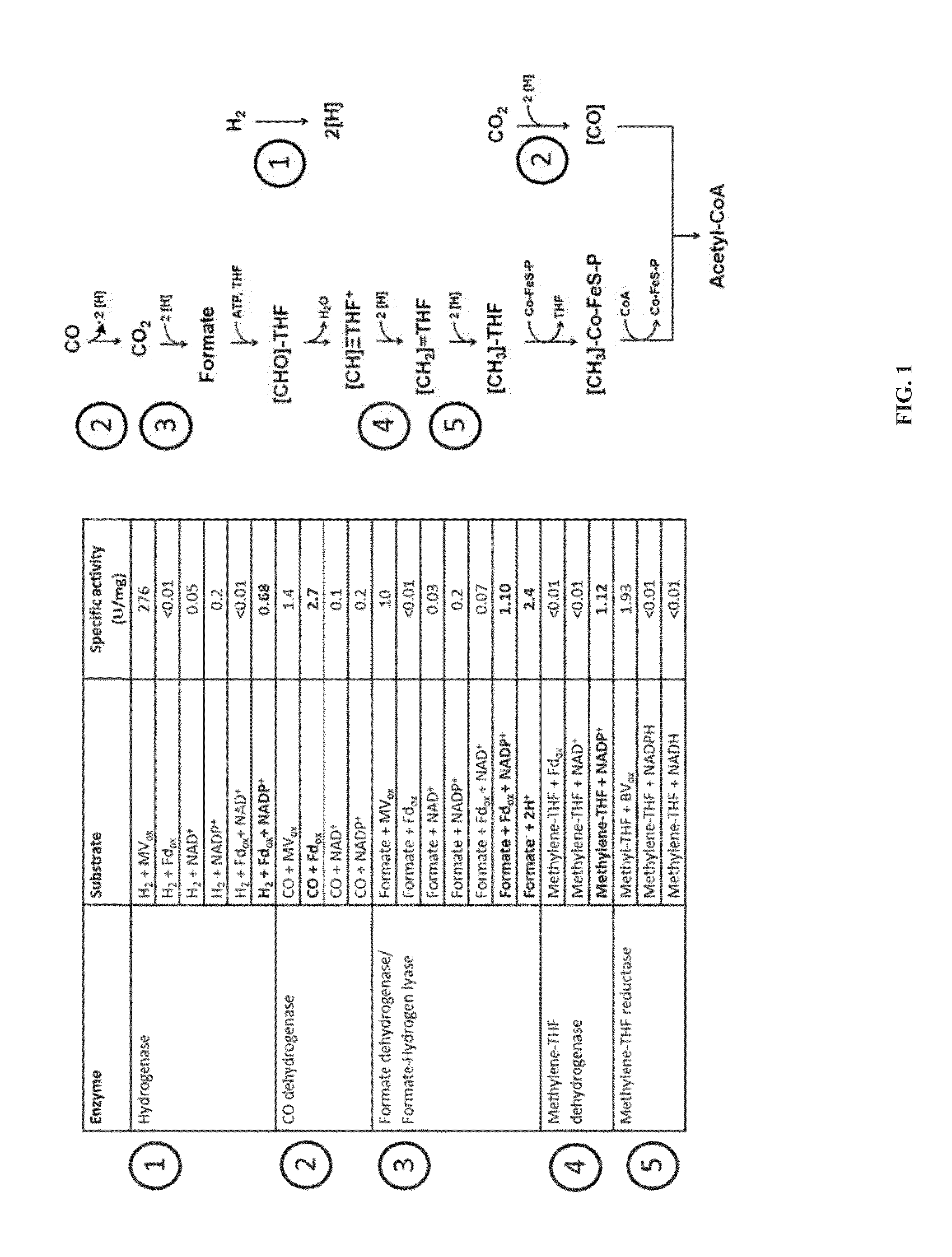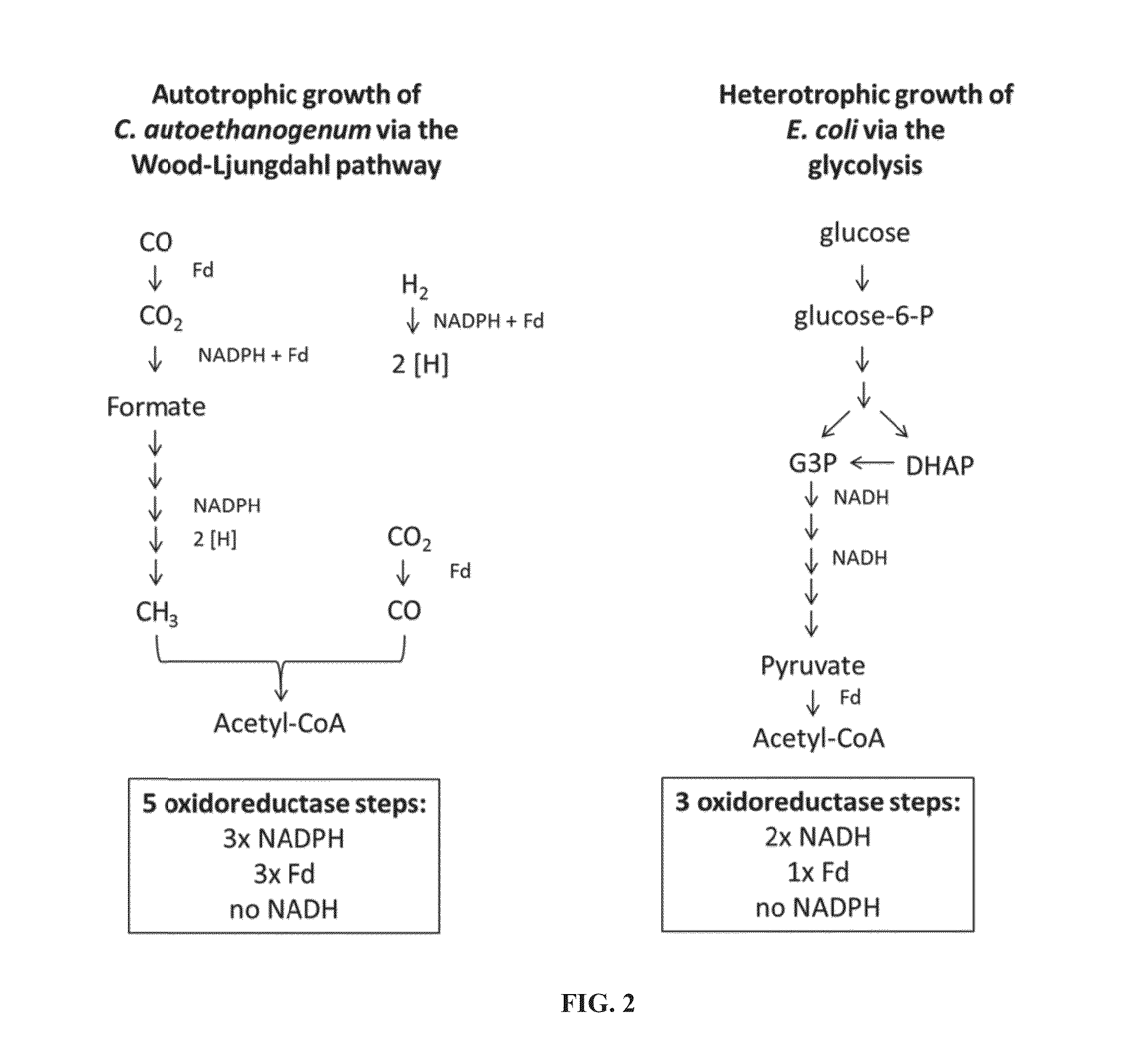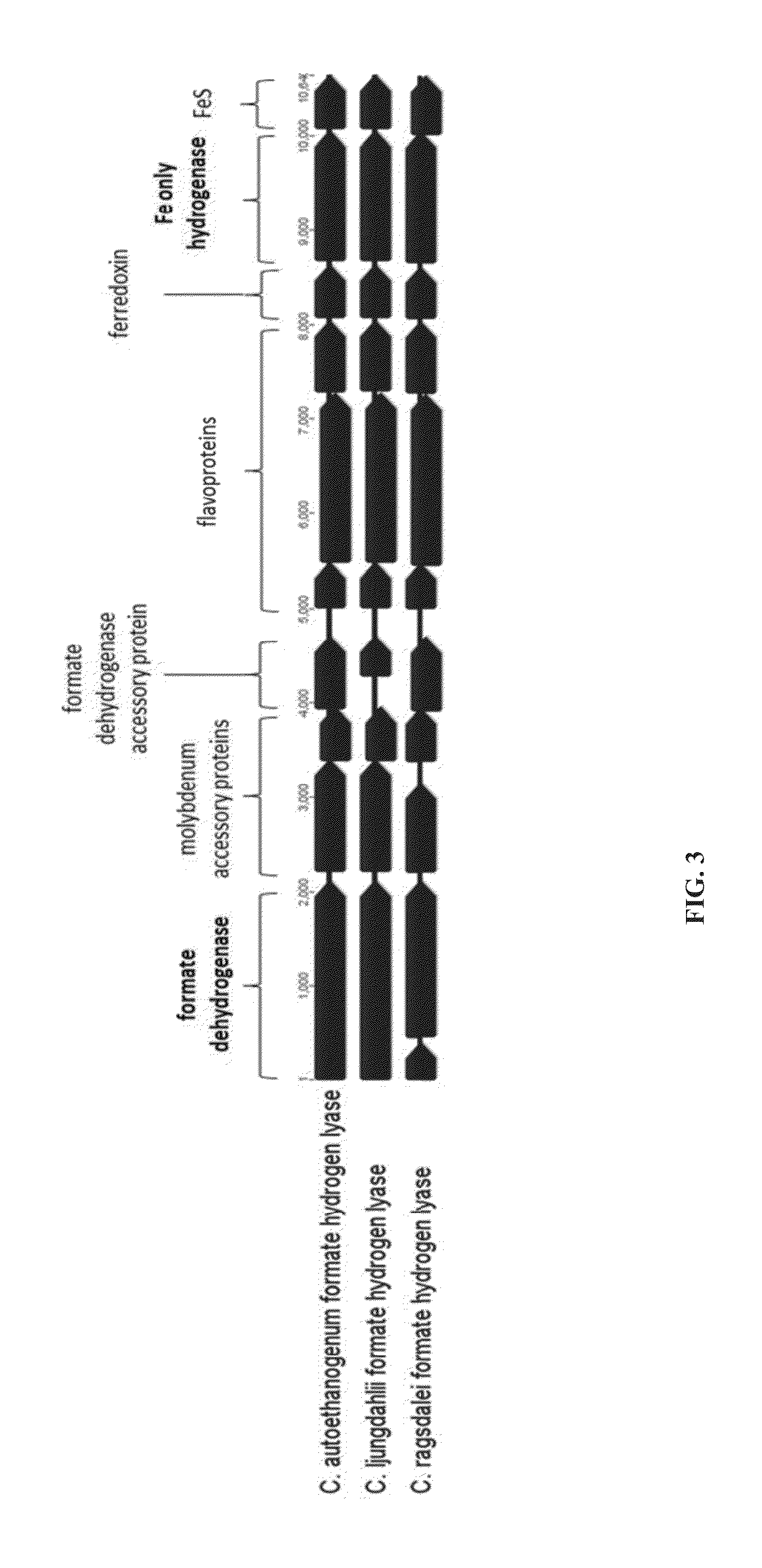Recombinant microorganisms comprising NADPH dependent enzymes and methods of production therefor
- Summary
- Abstract
- Description
- Claims
- Application Information
AI Technical Summary
Benefits of technology
Problems solved by technology
Method used
Image
Examples
example 1
[0225]All five oxidoreductase enzyme steps of the Wood-Ljungdahl pathway were assayed to determine their activity in the presence of different substrates. These enzymes can use co-factors to drive the reaction. The enzymes are involved in autotrophic growth including uptake and utilization of CO, CO2, and H2 gases.
[0226]The enzymes assayed and their activities are detailed in FIG. 1. All assays performed were tested using a synthetic redox dye as control, either methyl viologen (MV) or benzyl viologen (BV). Co-factors ferredoxin (Fd), NADH and NADPH or a combination thereof was tested. Enzyme assays were performed using crude extracts from a typical reactor run growing autotrophically on CO and hydrogen.
[0227]Fermentations with C. autoethanogenum DSM23693 were carried out in 1.5 L bioreactors at 37° C. and CO-containing steel mill gas as sole energy and carbon source as described below. A defined medium containing per litre: MgCl, CaCl2 (0.5 mM), KCl (2 mM), H3PO4 (5 mM)...
example 2
[0260]The relative expression of over 200 genes C. autoethanogenum genes was analysed using real-time quantitative PCR to determine the genes with highest expression.
[0261]Fermentations with C. autoethanogenum DSM23693 were carried out in 1.5 L bioreactors at 37° C. and CO-containing steel mill gas as sole energy and carbon source as described below. A defined medium containing per litre: MgCl, CaCl2 (0.5 mM), KCl (2 mM), H3PO4 (5 mM), Fe (100 μM), Ni, Zn (5 μM), Mn, B, W, Mo, Se (2 μM) was used for culture growth. The media was transferred into the bioreactor and autoclaved at 121° C. for 45 minutes. After autoclaving, the medium was supplemented with Thiamine, Pantothenate (0.05 mg), Biotin (0.02 mg) and reduced with 3 mM Cysteine-HCl. To achieve anaerobicity the reactor vessel was sparged with nitrogen through a 0.2 μm filter. Prior to inoculation, the gas was switched to CO-containing steel mill gas, feeding continuously to the reactor. The gas flow was initially set...
example 3
[0264]Primary-secondary alcohol dehydrogenase (ADH) is a strictly NADPH-dependent enzyme that converts acetone to isopropanol. Its activity is demonstrated using enzyme assays with crude extract prepared from fermentation broth containing acetone as well as 0.2 mM of either NADH or NADPH (Ismaiel, Zhu, Colby, & Chen, 1993)
[0265]A reactor study with C. autoethanogenum was performed to demonstrate effective NADPH dependent conversion of acetone to isopropanol at high rates. In continuous mode with stable biomass and metabolite production, acetone was added to both the bioreactor and the feed medium. Acetone was spiked into the reactor to a certain level, which was then obtained by continuous feeding. Initially, 1 g / L acetone was added, once the metabolite concentrations had stabilised, the concentration was increased to 5 g / L, 15 g / l, and in a second experiment to 20 g / L.
Materials and Methods
Analysis of Metabolites
[0266]HPLC analysis of acetone, isopropanol and other metabolites was p...
PUM
 Login to View More
Login to View More Abstract
Description
Claims
Application Information
 Login to View More
Login to View More - R&D
- Intellectual Property
- Life Sciences
- Materials
- Tech Scout
- Unparalleled Data Quality
- Higher Quality Content
- 60% Fewer Hallucinations
Browse by: Latest US Patents, China's latest patents, Technical Efficacy Thesaurus, Application Domain, Technology Topic, Popular Technical Reports.
© 2025 PatSnap. All rights reserved.Legal|Privacy policy|Modern Slavery Act Transparency Statement|Sitemap|About US| Contact US: help@patsnap.com



